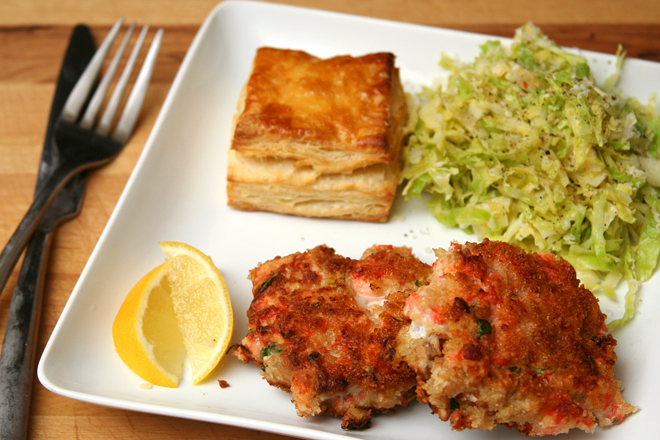Soon after I started dating Dave, we spent the weekend in his hometown, staying with his best friends (who are now also my best friends). Our hostess made lemon poppy seed muffins one morning for breakfast, and they were fantastic. A few months later, I asked my friend for the recipe, and she couldn’t find it. How does someone lose a recipe? I don’t get it. I have a number of recipe sources (cookbooks and websites), and if I can’t remember which one a recipe came from, I can generally figure it out with a few minutes of searching. Maybe my friend made the muffins from a mix and didn’t want to tell me. I don’t know.
Since then, I’ve tried a number of lemon poppy seed muffin recipes, looking for one that lived up to that memory. I won’t complain about any of them, because it’s an unbeatable combination of flavors, but none were as good as I was hoping for, until this recipe. These are light and tender and lemony without being sour, with a satisfying crunch from the poppy seeds. I’ll be sure not to lose this recipe.
Lemon Poppy Seed Muffins (from Cooks Illustrated January 1997)
Makes 1 dozen large muffins
CI note: Remember, if you’re short on time, you can melt the butter, mix it with the eggs, and stir it into the dry ingredients. When thoroughly mixed, beat in the yogurt and proceed with the recipe.
3 cups unbleached all-purpose flour
1 tablespoon baking powder
½ teaspoon baking soda
3 tablespoons poppy seeds
½ teaspoon table salt
10 tablespoons unsalted butter, softened
1 cup granulated sugar, less 1 tablespoon
1 tablespoon grated lemon zest
2 large eggs
1½ cups plain low-fat yogurt
Vegetable cooking spray or additional unsalted butter for muffin tins
¼ cup granulated sugar
¼ cup lemon juice
1. Adjust oven rack to lower middle position and heat oven to 375 degrees. Mix flour, baking powder, baking soda, poppy seeds, and salt in medium bowl; set aside.
2. Beat butter and sugar with electric mixer on medium-high speed until light and fluffy, about 2 minutes. Add lemon zest to butter-sugar mixture. Add eggs, one at a time, beating well after each addition. Beat in one-half of dry ingredients. Beat in one-third of yogurt. Beat in remaining dry ingredients in two batches, alternating with yogurt, until incorporated.
3. Spray twelve-cup muffin tin with vegetable cooking spray or coat lightly with butter. Use large ice cream scoop to divide batter evenly among cups. Bake until muffins are golden brown, 25 to 30 minutes. Set on wire rack to cool slightly, about 5 minutes. Remove muffins from tin and glaze.
4. For Glaze: While muffins are baking, heat 1/4 cup granulated sugar and lemon juice in small saucepan until sugar dissolves and mixture forms light syrup, 3 to 4 minutes. Brush warm syrup over warm muffins and serve.











































